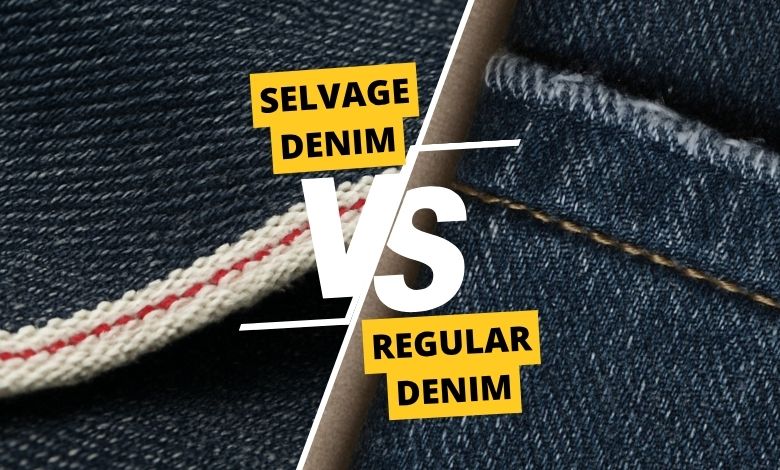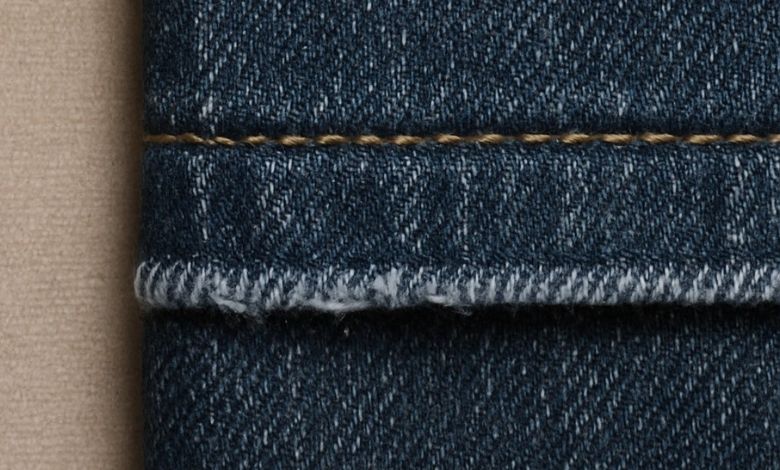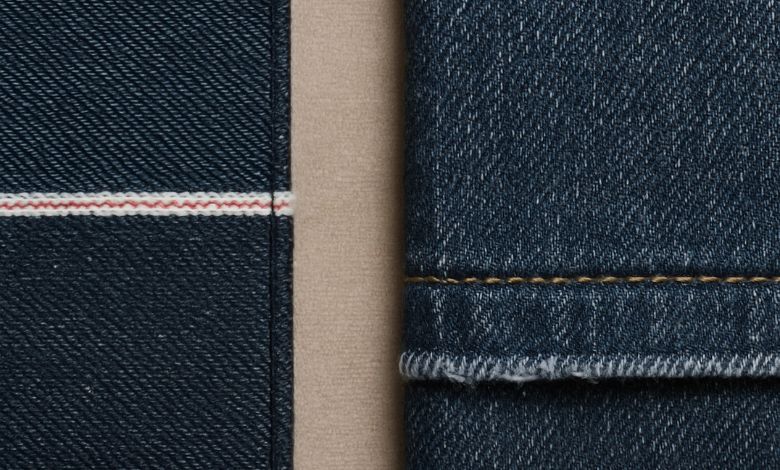Selvage Denim vs. Regular Denim: Which is Best for a Kilt?

Denim today has various types which are known to produce different types of apparel including kilts. Selvage and regular denim are two prominent types offering different traits. Moreover, they do not even share the same aesthetics. Similar to their appearances, many other differences like comfort, price, sustainability, and many other things make them dissimilar. The article today aims to show the differences between these denims. Before we dive into selvage denim vs. regular denim, let us understand what they are.
What Is Selvage Denim?

Selvage denim is a type of denim that distinguishes itself by self-finished edges. This denim is produced by a particular weaving method utilizing shuttle looms. Everyone today knows that selvage denim has a unique and long-lasting appearance because its edges are firmly knitted and do not tear. Moreover, a colored line running down the edge serves as a visual identity.
What Is Regular Denim?

Regular denim, on the other hand, is a type of denim that is made with 100% cotton fabric which is woven into a twill pattern. The weaving process reveals much about its durability and comfort. This variation is also quite easy to identify because of its consistent stitching and reinforced parts like denim and hem.
Selvage Denim vs. Regular Denim

You might be aware of the fact that selvage denim is more ancient than regular one. Selvage denim was initially made by hand and did not have different designs. Regular denim, at the same time, is a later addition and is flexible enough to become stylish apparel. So, move ahead to find the primary differences between them.
Comfort Level is Different
Selvage Denim: The comfort, without a doubt, is the identity of denim. However, when we compare these two variations, we find selvage denim to be less comfortable. The denim itself is heavy and has a stiffness that impacts the comfort level. However, as the denim breaks with time, it starts becoming comfortable.
Regular Denim: If we talk about regular denim, we find it to be more comfortable. It is often a combination of its natural fabric and ability to break in and conform to the body. Similarly, its versatility in terms of fit and styling also results in comfort. Moreover, the durable cotton fibers provide softness and breathability, while the twill weave contributes to a comfortable fit.
Style Options
Selvedge Denim: When we compare both denim types from a style perspective, selvage denim rises as a strong contestant. The traditional shuttle loom process results in finished edges which offers a unique styling touch. Therefore, its aesthetic style after getting faded makes it more attractive.
Regular Denim: While talking about the styling perspective of regular denim, we find it the result of the modern era making it more stylish. Similarly, its construction with the latest process and durability collectively makes it more prone to be a stylish material. Therefore, regular denim is more versatile and is wearable at different events.
The Affordability
Selvage Denim: When comparing affordability differences, we find selvage denim to be more costly. Its crafting still takes place with a loom process which is a traditional way. However, the scarcity of spare parts makes it more costly. Furthermore, the process is also lengthy, that’s why regular selvedge kilts are more costly.
Regular Denim: This denim variation is more affordable. Regular denim does not involve craftsmanship or labor practices, while machines are involved. Similarly, its production in a large quantity fulfills the demand of makers quickly and impacts its price as well. One more thing that we must add here is that the quality of regular denim is in the control of the makers, which also decides its price.
Sustainability Factor
Selvedge Denim: Sustainability today is the major choice of people and selvage denim supports them. Its durability and minimal waste result in a longer lifespan which reduces the production process. Similarly, the use of organic cotton or recycled materials contributes to a lower environmental impact.
Regular Denim: If we analyze regular denim on this scale, we find it less sustainable. The higher consumption rate of regular denim significantly contributes to textile waste. The industry’s large-scale production and disposal of denim garments result in substantial environmental impact and resource waste.
Which One Is Better for Kilts

While comparing types of denim for making kilts, regular denim usually is a better option. Comfort is the primary requirement in kilts while regular denim offers a more smooth and soft touch. Similarly, the demand for kilts is significantly increasing and selvage denim kilts have a slow production. The last and most important point, regular denim is affordable making it better to make kilts.
Final Thoughts
Regular and selvedge denims are two different things each offering its unique traits. They have many differences from comfort to style and affordability to sustainability. While choosing the preferable denim variation for kilts, regular denim is more worthy.




